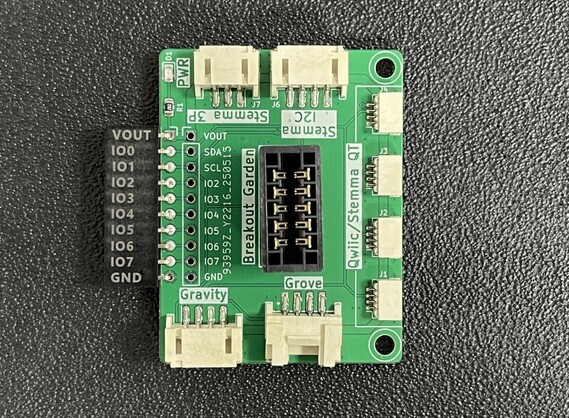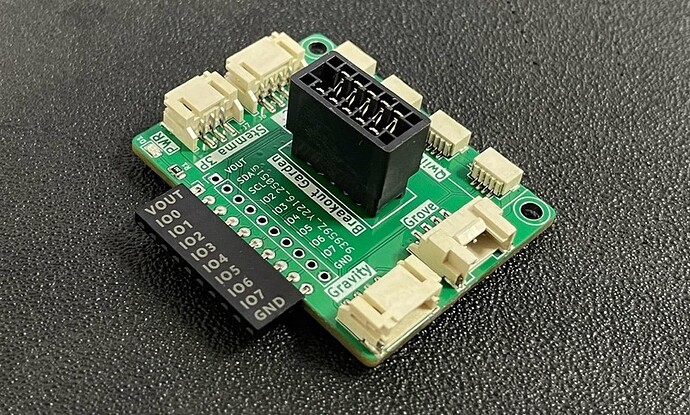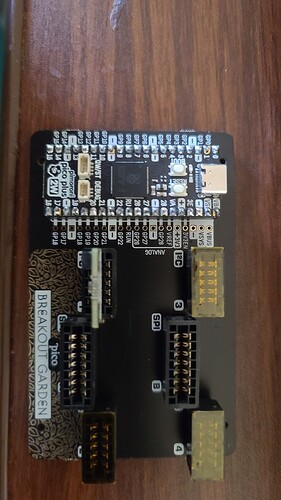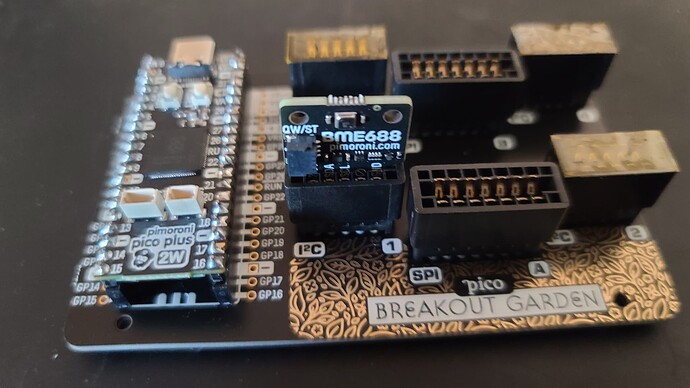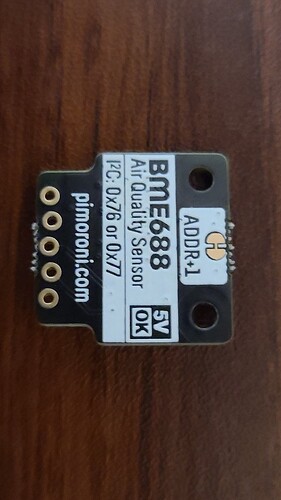I don’t have any gravity boards that I know of, but I’m of course happy to test the others
Is this destined to be on sale anywhere once tested? Or will the schematic/PCB design be available (in KiCad of course)? Thanks.
Both. Assemble of 5 test boards should be done next week. If it works we will put it in production.
It should be in github now, BUT my local PCB folder is so trashed it’s really hard to sort through it and get the right stuff pushed. I need to make a backup and then delete everything I don’t think is important (between revision kicad files, random tests, etc).
We have a few prototypes of these now. @henrygab & @kd7eir I have your addresses on file and we’ll mail it out tomorrow. Let me know if I am supposed to send something and forgot ![]()
@Funcan - Please PM/DM me your address and I’ll send you one as well.
Excellent. I just received a BME688 Breakout Garden board and Pico Breakout Garden Base.
A previous coworker also sent me a Gravity Digital 1-to-8 I2C Multiplexer, a Gravity Science Data Acquisition (SCI DAQ) Module, a Gravity Electrochemical Oxygen / O2 Sensor, and a Gravity Industrial Analog EC / Electrical Conductivity Meter.
I’ve got a few things to play around with…
Excellent, I look forward to hearing your thoughts!
That looks great! DM sent, looking forward to trying it
A couple of pics of the pico breakout garden base and the breakout garden BME688 that I received today.
The caps on the board edge connectors are interesting. I guess being a closed vertical receptical is just inviting dust and gunk. Will look for those.
Eta: or is it just kapton tape?
It’s just kapton
//words
It’s so beautiful! I like it
I’ve been pulling my hair out trying to get Pimoroni’s Breakout Garden Base to work with my BME688 and BMP390. Final assessment: All four of the I2C slots’ SCL, INT, and GND are connected to GND on the Pico breakout.
That seems odd. Can you elaborate on your setup?
This is sick! At my university I see a lot of DFRobot/Gravity stuff around (they’re stocked by some of the usual suppliers we can order from for student projects, in fact I think I used a few bits from them for a uni project a few months back). Probably because they’re available in the right places as mentioned prior, and also combined with the low cost. If you need any more testing done, I can easily borrow a bunch of Gravity and Stemma QT boards from labs, although it seems you might be well covered already.
It’s just the Pimoroni Pico Breakout Garden Base. None of the Gravity sensors I have are detected when plugged into it, but they all work when plugged into every other device I have that supports I2C.
One of the Picos was outputting 3.79 volts to the board, and when I discovered that, I trashed that Pico. (Actually, it went into my vast graveyard box of defective devices; I hate throwing electronics away.) Switched to another Pico, voltage was 3.29, but still nothing detected when plugged into the Breakout Garden Base.
I plugged the BME688 into the QW/ST port on my Pimoroni Pico Plus, ran an I2C scan, and saw the device. Then, I plugged the Pico Plus into the Breakout Garden Base with the BME688 still plugged into the QW/ST port, and the I2C scan found nothing. Pulled the Pico Plus from the Breakout Garden, and the I2C scan found the BME688.
After waiting far too long, I grabbed the schematic for the Break Garden Base and started poking around. That’s when I discovered that SCL, INT, and GND were connected together.
I’ve provided my findings to Robot Shop and Pimoroni, including screenshots and the Python code that I used, but so far, I’ve heard nothing back from either of them.
I just received an email from Robot Shop, and they are sending a replacement.
This board showed up the other day. Curious if it has made its way to anyone else?
I will taobao up an example of each board, which I should have done ages ago.
I’ve had nothing yet
Thanks! I will ask the office for everyone’s tracking number.
Mine showed up yesterday. I’m hoping to be able to test later today or tomorrow.
